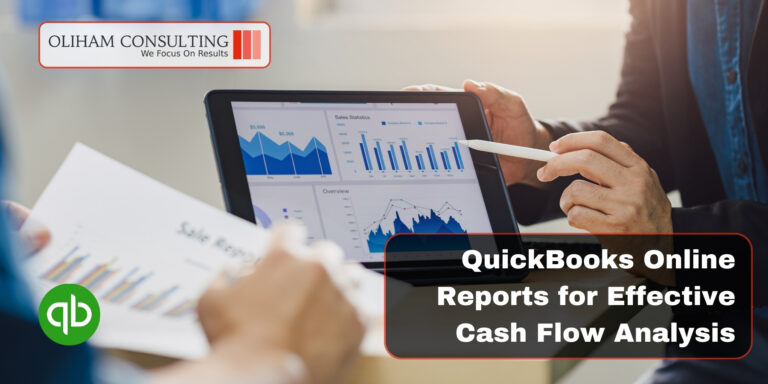Introduction: Understanding the Power of Bookkeeping Data in Business Decision Making
Understanding the power of bookkeeping data is essential for making informed business decisions that drive growth and profitability. By utilizing this valuable resource effectively and employing robust financial management practices based on reliable insights derived from bookkeeping records, organizations can navigate challenges with confidence while seizing opportunities for success in a dynamic marketplace.
The Importance of Accurate Bookkeeping for Effective Decision Making
Accurate bookkeeping plays a crucial role in facilitating effective decision-making within businesses. By maintaining precise and up-to-date financial records, organizations can gain valuable insights into their financial health and make informed decisions based on real-time data.
One of the key benefits of accurate bookkeeping is that it provides a clear picture of the company’s financial standing. By keeping track of income, expenses, and other financial transactions, businesses can monitor their cash flow and identify areas for improvement or potential risks.
Furthermore, accurate bookkeeping enhances the decision-making process by providing financial transparency. It allows stakeholders to access reliable information about the company’s performance, enabling them to make strategic decisions with confidence.
In today’s digital age, accounting software has revolutionized bookkeeping practices. These tools automate many manual tasks, reducing the risk of errors and ensuring greater accuracy in record-keeping. With features such as automated data entry and real-time reporting, businesses can streamline their bookkeeping processes and have access to timely financial information when making critical decisions.
In conclusion, accurate bookkeeping is essential for effective decision-making within organizations. It not only provides a comprehensive view of the company’s finances but also promotes transparency and enables stakeholders to make informed choices based on reliable data.
Analyzing Key Financial Metrics: How to Interpret Bookkeeping Data to Drive Growth
Analyzing key financial metrics is crucial for businesses looking to drive growth and make informed decisions. By interpreting bookkeeping data, businesses can gain valuable insights into their financial performance and identify areas for improvement.
One important aspect of financial metrics analysis is understanding profitability ratios. These ratios provide a snapshot of how efficiently a business is generating profits relative to its expenses and investments. By examining metrics such as gross profit margin, net profit margin, and return on investment, businesses can assess their overall profitability and make strategic adjustments accordingly.
Additionally, cash flow analysis plays a vital role in understanding the financial health of a business. It involves examining the inflows and outflows of cash to determine if a company has sufficient liquidity to meet its obligations. By analyzing cash flow statements, businesses can identify trends, manage working capital effectively, and ensure they have enough cash on hand for operational needs or future investments.
Furthermore, breaking down expenses allows businesses to understand where their money is being spent. Expense breakdowns help identify areas where costs can be reduced or optimized without compromising quality or operational efficiency.
In conclusion, interpreting bookkeeping data through financial metrics analysis empowers businesses to drive growth by making data-driven decisions. By understanding profitability ratios, conducting cash flow analysis, monitoring revenue trends, and analyzing expense breakdowns, companies can optimize their operations and position themselves for long-term success in a competitive marketplace.
Identifying Trends and Patterns: Using Bookkeeping Data to Spot Opportunities and Mitigate Risks
Trend analysis in bookkeeping data allows businesses to identify patterns over time, such as revenue growth or expense fluctuations. This analysis enables them to spot emerging trends and capitalize on opportunities that may arise.
Furthermore, utilizing bookkeeping data for risk management strategies is essential in mitigating potential risks. By closely monitoring financial indicators and conducting trend analysis, businesses can identify warning signs of potential financial challenges or vulnerabilities.
Another significant benefit of leveraging bookkeeping data is the ability to forecast future trends. By analyzing historical data and identifying patterns, businesses can make accurate predictions about future market conditions or customer behavior.
In conclusion, harnessing the power of trend analysis in bookkeeping data offers numerous advantages for businesses. From spotting opportunities for growth to implementing effective risk management strategies and forecasting future trends accurately – leveraging this valuable resource enables companies to stay ahead of the competition and navigate through uncertainties with confidence.
Budgeting and Forecasting: Leveraging Bookkeeping Data for Better Financial Planning
Budgeting with bookkeeping data allows businesses to track their income and expenses in real-time, providing a clear picture of their financial health. This data can be used to identify areas of overspending or inefficiencies, enabling organizations to make necessary adjustments and optimize their budgets.
Furthermore, by utilizing cash flow forecasting tools that integrate with bookkeeping systems, businesses can project future cash inflows and outflows more accurately. This helps in identifying potential cash shortfalls or surpluses, allowing organizations to take proactive measures such as adjusting spending or seeking additional financing if needed.
The combination of budgeting with bookkeeping data and leveraging cash flow forecasting tools empowers businesses to make strategic financial decisions based on reliable information. It enables them to allocate resources effectively, minimize risks, seize opportunities, and ultimately drive sustainable growth.
In conclusion, embracing the power of bookkeeping data for budgeting and forecasting is essential for organizations looking to enhance their financial planning capabilities. By leveraging these tools and insights, businesses can achieve better control over their finances and pave the way for long-term success.
Making Strategic Decisions: Incorporating Bookkeeping Insights into Business Strategies
Bookkeeping data provides a wealth of information that can guide decision-making processes. From analyzing financial statements to tracking cash flow patterns, businesses can uncover valuable insights that can shape their strategic direction. By leveraging this data, organizations can identify trends, spot opportunities for cost savings or revenue growth, and make informed choices that align with their long-term goals.
Strategic decision-making with bookkeeping data allows businesses to have a clearer understanding of their financial health and performance. It enables them to identify areas where they may be overspending or underutilizing resources, leading to more efficient allocation of funds. Moreover, by closely monitoring financial metrics such as profitability ratios or liquidity ratios, companies can proactively address potential risks and take appropriate measures to mitigate them.
Incorporating bookkeeping insights into business strategies also fosters transparency and accountability within an organization. When decision-makers have access to accurate financial information, they can make well-informed choices that are aligned with the company’s overall objectives. This level of transparency strengthens stakeholder trust and confidence in the organization’s leadership.
Furthermore, by utilizing bookkeeping data in strategic decision-making processes, businesses can adapt quickly to changing market conditions. Financial indicators such as sales trends or customer acquisition costs provide valuable signals about market demand and competitive dynamics. Armed with this information, companies can pivot their strategies accordingly and stay ahead of the curve.
In conclusion, incorporating bookkeeping insights into business strategies is essential for making informed decisions that drive success in today’s dynamic marketplace. By leveraging the wealth of information available through bookkeeping data analysis, organizations can optimize resource allocation, enhance transparency and accountability within the company, and adapt swiftly to market changes. Embracing the power of strategic decision-making with bookkeeping data is a key step towards achieving long-term growth and profitability.
Conclusion: Harness the Power of Bookkeeping Data to Drive Your Business Towards Success!
In conclusion, harnessing the power of bookkeeping data can significantly contribute to driving your business towards success. By diligently recording and analyzing your financial information, you gain valuable insights into the health and performance of your business.





